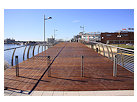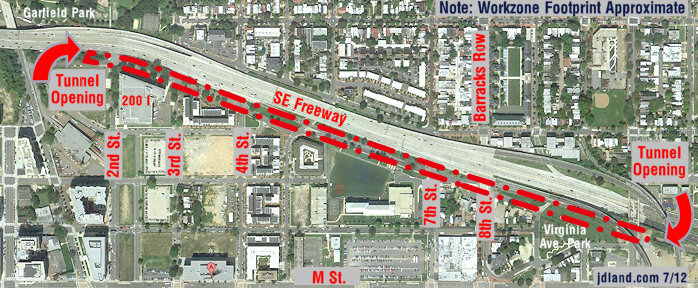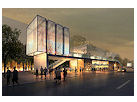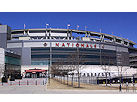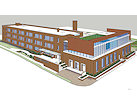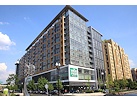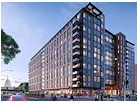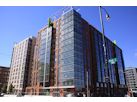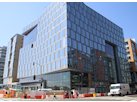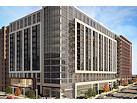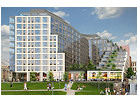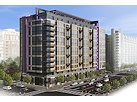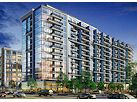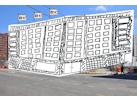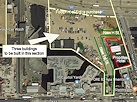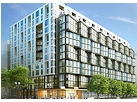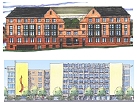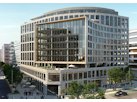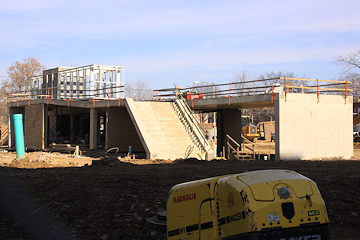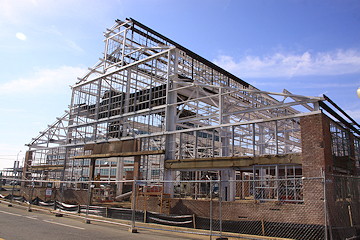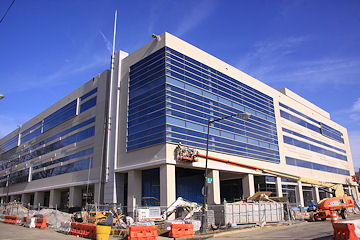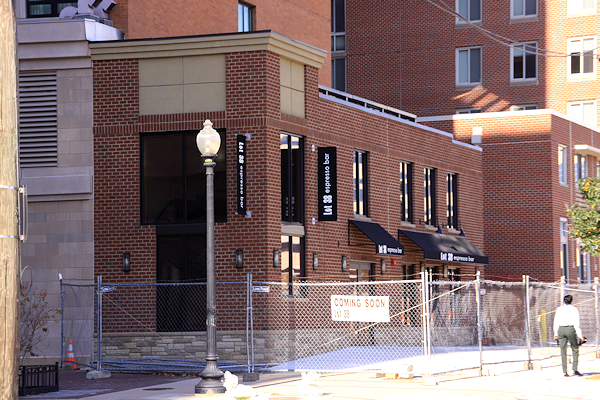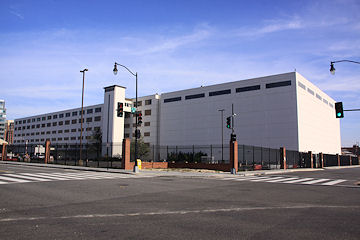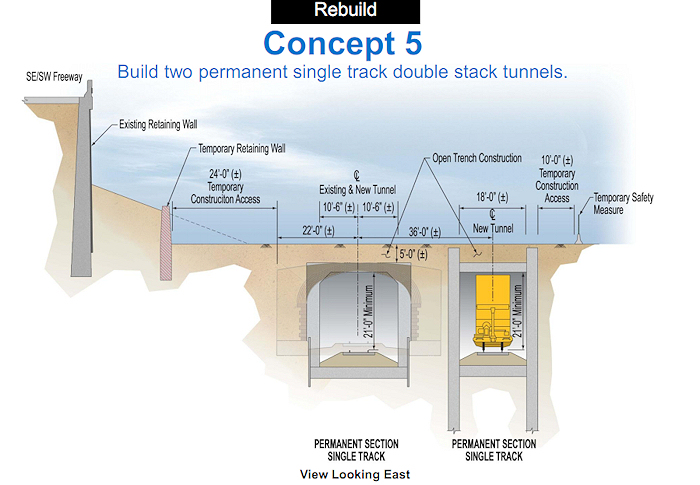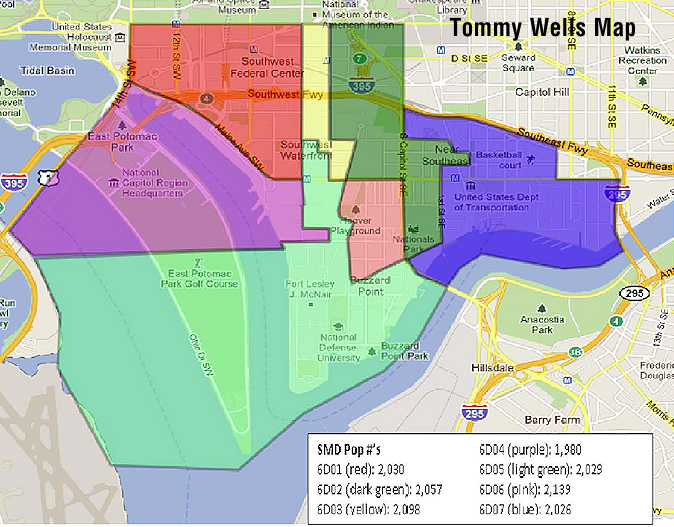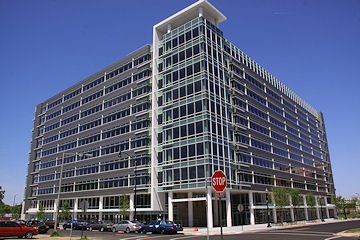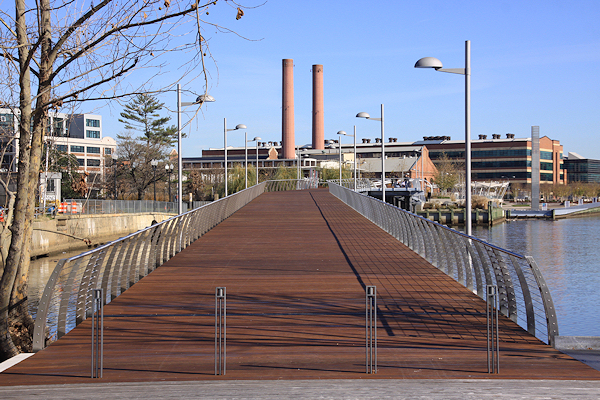|
| ||||||||||||||||||||
Please note that JDLand is no longer being updated.
peek >>
Near Southeast DC Past News Items
- Full Neighborhood Development MapThere's a lot more than just the projects listed here. See the complete map of completed, underway, and proposed projects all across the neighborhood.
- What's New This YearA quick look at what's arrived or been announced since the end of the 2018 baseball season.
- Food Options, Now and Coming SoonThere's now plenty of food options in the neighborhood. Click to see what's here, and what's coming.
- Anacostia RiverwalkA bridge between Teague and Yards Parks is part of the planned 20-mile Anacostia Riverwalk multi-use trail along the east and west banks of the Anacostia River.
- Virginia Ave. Tunnel ExpansionConstruction underway in 2015 to expand the 106-year-old tunnel to allow for a second track and double-height cars. Expected completion 2018.
- Rail and Bus Times
Get real time data for the Navy Yard subway, Circulator, Bikeshare, and bus lines, plus additional transit information. - Rail and Bus Times
Get real time data for the Navy Yard subway, Circulator, Bikeshare, and bus lines, plus additional transit information. - Canal ParkThree-block park on the site of the old Washington Canal. Construction begun in spring 2011, opened Nov. 16, 2012.
- Nationals Park21-acre site, 41,000-seat ballpark, construction begun May 2006, Opening Day March 30, 2008.
- Washington Navy YardHeadquarters of the Naval District Washington, established in 1799.
- Yards Park5.5-acre park on the banks of the Anacostia. First phase completed September 2010.
- Van Ness Elementary SchoolDC Public School, closed in 2006, but reopening in stages beginning in 2015.
- Agora/Whole Foods336-unit apartment building at 800 New Jersey Ave., SE. Construction begun June 2014, move-ins underway early 2018. Whole Foods expected to open in late 2018.
- New Douglass BridgeConstruction underway in early 2018 on the replacement for the current South Capitol Street Bridge. Completion expected in 2021.
- 1221 Van290-unit residential building with 26,000 sf retail. Underway late 2015, completed early 2018.
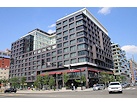
- NAB HQ/AvidianNew headquarters for National Association of Broadcasters, along with a 163-unit condo building. Construction underway early 2017.
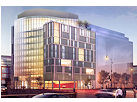
- Yards/Parcel O Residential ProjectsThe Bower, a 138-unit condo building by PN Hoffman, and The Guild, a 190-unit rental building by Forest City on the southeast corner of 4th and Tingey. Underway fall 2016, delivery 2018.
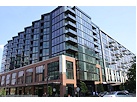
- New DC Water HQA wrap-around six-story addition to the existing O Street Pumping Station. Construction underway in 2016, with completion in 2018.
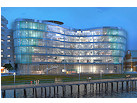
- The Harlow/Square 769N AptsMixed-income rental building with 176 units, including 36 public housing units. Underway early 2017, delivery 2019.
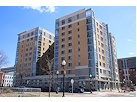
- West Half Residential420-unit project with 65,000 sf retail. Construction underway spring 2017.
- Novel South Capitol/2 I St.530ish-unit apartment building in two phases, on old McDonald's site. Construction underway early 2017, completed summer 2019.
- 1250 Half/Envy310 rental units at 1250, 123 condos at Envy, 60,000 square feet of retail. Underway spring 2017.
- Parc Riverside Phase II314ish-unit residential building at 1010 Half St., SE, by Toll Bros. Construction underway summer 2017.
- 99 M StreetA 224,000-square-foot office building by Skanska for the corner of 1st and M. Underway fall 2015, substantially complete summer 2018. Circa and an unnamed sibling restaurant announced tenants.
- The Garrett375-unit rental building at 2nd and I with 13,000 sq ft retail. Construction underway late fall 2017.
- Yards/The Estate Apts. and Thompson Hotel270-unit rental building and 227-room Thompson Hotel, with 20,000 sq ft retail total. Construction underway fall 2017.
- Meridian on First275-unit residential building, by Paradigm. Construction underway early 2018.
- The Maren/71 Potomac264-unit residential building with 12,500 sq ft retail, underway spring 2018. Phase 2 of RiverFront on the Anacostia development.
- DC Crossing/Square 696Block bought in 2016 by Tishman Speyer, with plans for 800 apartment units and 44,000 square feet of retail in two phases. Digging underway April 2018.
- One Hill South Phase 2300ish-unit unnamed sibling building at South Capitol and I. Work underway summer 2018.
- New DDOT HQ/250 MNew headquarters for the District Department of Transportation. Underway early 2019.
- 37 L Street Condos11-story, 74-unit condo building west of Half St. Underway early 2019.
- CSX East Residential/Hotel225ish-unit AC Marriott and two residential buildings planned. Digging underway late summer 2019.
- 1000 South Capitol Residential224-unit apartment building by Lerner. Underway fall 2019.
- Capper Seniors 2.0Reconstruction of the 160-unit building for low-income seniors that was destroyed by fire in 2018.
- Chemonics HQNew 285,000-sq-ft office building with 14,000 sq ft of retail. Expected delivery 2021.
2718 Blog Posts Since 2003
Go to Page: 1 | ... 17 | 18 | 19 | 20 | 21 | 22 | 23 | 24 | 25 ... 272
Search JDLand Blog Posts by Date or Category
Go to Page: 1 | ... 17 | 18 | 19 | 20 | 21 | 22 | 23 | 24 | 25 ... 272
Search JDLand Blog Posts by Date or Category
In March 2011, I posted on the proposed 2012 tax assessments for the 900-plus tax parcels that I track as Near Southeast properties, which valued the neighborhood at just a teensy bit under $6 billion ($5.994B). But there's a reason those are just "proposed": property owners need a chance to prostrate themselves before the city to try to get their assessments revised. In addition, new properties come onto the rolls during the year as projects get completed. 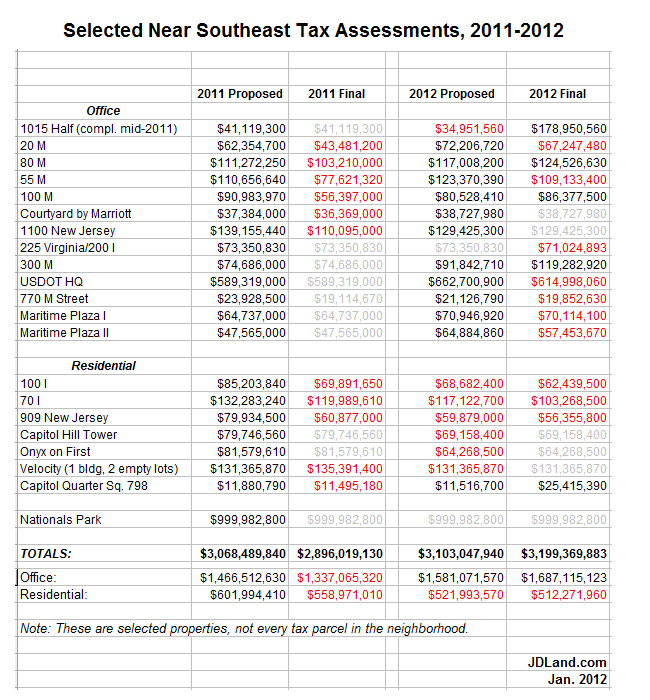 There were 15 properties that received reductions for their 2012 bills, totaling about $148 million. The big property owners managed a few hefty cuts, with JBG's US Department of Transportation building leading the way with a $47.7 million reduction to just under $615 million, followed by CSX's empty lots near the freeway north of I Street getting a $46.3 million haircut down to $66.2 million. Many of the other shiny new-ish buildings of the neighborhood also got their tallies reduced, such as apartment buildings 70/100 I and 909 New Jersey and office buildings 20 M, 55 M, 225 Virginia, and Maritime Plaza I and II.
There were 15 properties that received reductions for their 2012 bills, totaling about $148 million. The big property owners managed a few hefty cuts, with JBG's US Department of Transportation building leading the way with a $47.7 million reduction to just under $615 million, followed by CSX's empty lots near the freeway north of I Street getting a $46.3 million haircut down to $66.2 million. Many of the other shiny new-ish buildings of the neighborhood also got their tallies reduced, such as apartment buildings 70/100 I and 909 New Jersey and office buildings 20 M, 55 M, 225 Virginia, and Maritime Plaza I and II.
So, I can now report that the 2012 tax assessment total for Near Southeast is: $6.06 billion. Since the final assessments for 2011 came in at about $5.81 billion, 2012's number is a $248 million increase for actual assessments year-over-year.
 There were 15 properties that received reductions for their 2012 bills, totaling about $148 million. The big property owners managed a few hefty cuts, with JBG's US Department of Transportation building leading the way with a $47.7 million reduction to just under $615 million, followed by CSX's empty lots near the freeway north of I Street getting a $46.3 million haircut down to $66.2 million. Many of the other shiny new-ish buildings of the neighborhood also got their tallies reduced, such as apartment buildings 70/100 I and 909 New Jersey and office buildings 20 M, 55 M, 225 Virginia, and Maritime Plaza I and II.
There were 15 properties that received reductions for their 2012 bills, totaling about $148 million. The big property owners managed a few hefty cuts, with JBG's US Department of Transportation building leading the way with a $47.7 million reduction to just under $615 million, followed by CSX's empty lots near the freeway north of I Street getting a $46.3 million haircut down to $66.2 million. Many of the other shiny new-ish buildings of the neighborhood also got their tallies reduced, such as apartment buildings 70/100 I and 909 New Jersey and office buildings 20 M, 55 M, 225 Virginia, and Maritime Plaza I and II. But these reductions were offset by $216 million in upward revisions. Most of this is thanks to 1015 Half Street finally being completed, taking that parcel's assessment from last year's $41.1 million to just a hair under $144 million. Three other buildings (80 M, 100 M, and 300 M) received higher final assessments as well. Plus, 32 townhouses in Capitol Quarter came onto the rolls as completed buildings, bringing just under $14 million in new tax revenue. (Yes, yes, PILOT/payment in lieu of taxes--don't stop me when I'm on a roll.)
And, because people always want to know, the ballpark's assessment for 2012 remains the smidgiest smidge under $1 billion, unchanged from 2011, at $999,982,800.
Alas, I can't give good year-to-year comparison numbers on final assessments in previous years because I didn't really grasp this whole revision thing until last year (oops), but I can say that proposed assessments were just a mite over $6 billion in both 2010 and 2011, after having been at $4.47 billion in 2009. My March post has the year-by-year proposed assessed values for the neighborhood, if you want those numbers.
If you feel like digging deeper (since you don't pay me enough to just post all my numbers for you to use), here's the the current assessments database, which you can search yourself. Tune in this March to see what the city proposes for 2013 values, and then in January for what the values really end up being....
|
Comments (0)
More posts:
assessments
|
* There was a "Wait, what?" moment on Tuesday when DCist reported that a velodrome would be coming in 2012 "in the shadow of Nationals Park in Southeast DC." I did some quick sleuthing, looking at the organization's web site and seeing Akridge as a partner, but I just couldn't place the design as being along Half Street. Then, thinking about how people so often can't get Southeast and Southwest straight when it comes to anything near the ballpark, I took a look at the Google Maps view of Akridge's Buzzard Point land at 1st and V SW, and Ta-Da! A pretty clear match.
But this morning, Akridge is no longer listed as a partner on the web site, and the site rendering is gone, too. Perhaps this is all just because final leases and paperwork hadn't quite yet been signed. (A not uncommon tale, young upstarts getting all excited about a pending deal and blabbing just a little too much info for the comfort of the big company they're dealing with. Though it doesn't necessarily mean the deal is dead.) Of course, this is all actually outside my territory, so you'll want to go to SWill for updates.
UPDATE: Jonathan O'Connell has tweeted this out: "Akridge spokeswoman on velodrome: 'We don't have an agreement.' And: 'I would say that putting Akridge on the site was probably premature'."
* Last Wednesday, DDOT installed the new Bikeshare station at 3rd & G, SE, on the north side of the Results parking lot. This is technically outside of Near Southeast, but it's probably now the closest station for Capitol Quarter folks (and me!). It has 19 docks.
* DDOT is shooting for the weekend of Dec. 16 to open the new inbound/outbound freeway spans of the 11th Street Bridges, and they tormented me with some helicopter shots of the current progress. (Though remember that it's just the spans opening--they still have work to do on the ramps and flyovers to add the new movements to and from DC-295.) They also tweeted that the 11th Street Local bridge is ahead of schedule and will open spring/summer of next year. My construction progress photos from Nov. 1 are a smidge out of date by now, but still worth looking at.
* Foundry Lofts now has 19 moved-in residents.
(Of course, you already know much of this if you follow me on Twitter or Facebook.)
|
Comments (6)
|
Yes, it's time for another batch of updated construction photos. This is a tough stretch of year to take these--the sun never gets very high in the sky, so anything facing due south is about impossible to get without glare. And, for places like Canal Park, it's hard to even get some locations out of the shadows long enough to get a photo that you can decipher. But you can see (below left, and on the project page) a couple of shots of the progress on the park's pavilion where the Park Tavern restaurant will be housed, along with plenty of shots vaguely showing the other ongoing ground-level work. Meanwhile, at Capitol Quarter (below right), they continue to just zip right along, with framing now well underway on the north side of L and around up 4th, and prep work for foundations continuing in the project's final block, on the south side of L.
In the Renovation/Rehabilitation portion of the tour, we have a few updated images of the Boilermaker Shops (above left), another building that's tough to shoot in winter, even more so when there's not much of it other than steel beams at the moment (though they have recently been painted white). Meanwhile, 225 Virginia/200 I is coming pretty close to the end of its exterior renovations, though work inside will continue in preparation for the arrival of three DC agencies later this year.
There isn't much new to see of Lot 38 Espresso (aka the Little Red Building 2.0, above left), which the grapevine says is now shooting for a mid-December opening. (But, really, at this point, it opens when it opens--the last batch of permits and approvals is always slow going, and I bet the owner wants it open even more than you do.) I also took a bunch of shots of the former National Geospatial Intelligence Agency building at 1st and M (above right), not because there's been any changes to it, but because I really enjoyed finally being able to aim a camera at it without having guards reaching for their guns. (Nyaah! Nyaah! Click! Click! Click!)
I came home with 438 new photos (yikes), and you can browse the 180-plus I decided to upload to the online archive here. (Yes, it's true, you don't actually get to see every photo I've ever taken. Which is probably for the best.)
Remember to click the  icon to see the entire range of photos for any location, while the project pages linked to above are your best bet if you're looking for paired before-and-afters and/or narrated tours.
icon to see the entire range of photos for any location, while the project pages linked to above are your best bet if you're looking for paired before-and-afters and/or narrated tours.
 icon to see the entire range of photos for any location, while the project pages linked to above are your best bet if you're looking for paired before-and-afters and/or narrated tours.
icon to see the entire range of photos for any location, while the project pages linked to above are your best bet if you're looking for paired before-and-afters and/or narrated tours.And, in case you didn't see my tweet or my late-night update, the residential/Teeter project at 4th and M got all the dotted i's and crossed t's I mentioned in my initial post, and is officially now considered by Forest Ctiy as "commenced." (I just can't call it 1212 4th Street yet. Doesn't really make the location pop as well as "4th and M.")
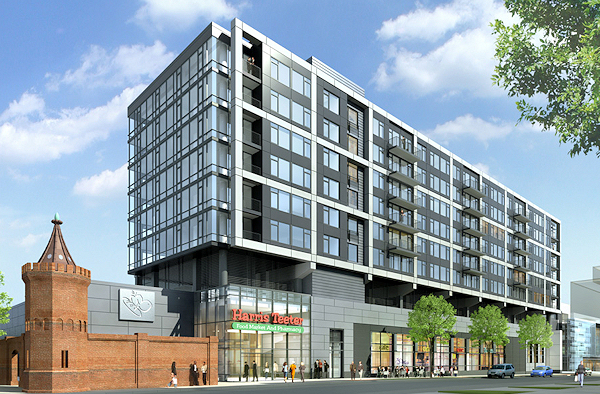 You know how I always like to say that something is expected to happen Any Minute Now? In the case of construction getting started on the southeast corner of 4th and M on the new residential/Teeter/retail building in The Yards, that's now actually a pretty true statement. On Thursday Forest City received the shoring/sheeting permit approval that the project has been waiting for, which will allow the start of digging at the site as soon as some other i's are dotted and t's are crossed.
You know how I always like to say that something is expected to happen Any Minute Now? In the case of construction getting started on the southeast corner of 4th and M on the new residential/Teeter/retail building in The Yards, that's now actually a pretty true statement. On Thursday Forest City received the shoring/sheeting permit approval that the project has been waiting for, which will allow the start of digging at the site as soon as some other i's are dotted and t's are crossed. Also, on Monday night, with almost no discussion, the Zoning Commission approved 5-0 the project's itsy bitsy teeny weeny design modifications discussed recently.
Getting construction started Any Minute Now should allow the Harris Teeter to open in late 2013 or early 2014, if all goes according to plan, though hopefully once the shovels hit the ground, we can get a more detailed timeline as to when the entire project will be finished.
LATE UPDATE: And, just like that, i's have been dotted and t's have been crossed, and Forest City tells me that this project is now considered "commenced."
|
Comments (3)
|
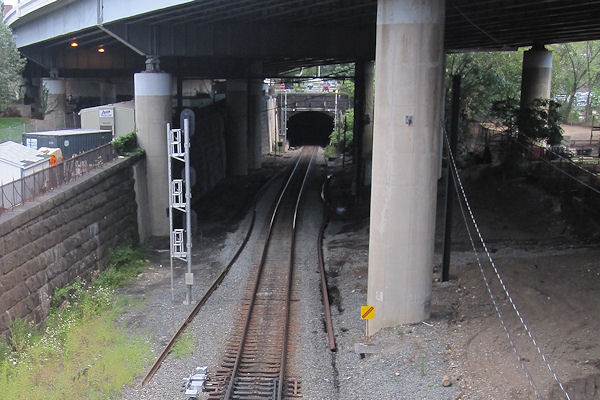 In a conference room at Nationals Park on Wednesday night, a bevy of representatives from CSX, DDOT, and FHWA along with consultants galore showed the public for the first time a series of 12 "project concepts" for how to handle CSX's desire/need to expand the capacity of the 3,800-foot-long Virginia Avenue Tunnel that runs from 2nd to 12th Street SE.
In a conference room at Nationals Park on Wednesday night, a bevy of representatives from CSX, DDOT, and FHWA along with consultants galore showed the public for the first time a series of 12 "project concepts" for how to handle CSX's desire/need to expand the capacity of the 3,800-foot-long Virginia Avenue Tunnel that runs from 2nd to 12th Street SE. The concepts are now posted on the project web site, and can be grouped as seven "rebuild" options along with four other "reroute" options that would bring about the abandonment of the tunnel altogether (and, it must be said, are probably a just smidge less likely to be one of the alternatives chosen).
Three of the rebuild options are along the lines of what's been discussed for more than two years now, which would be the running of a temporary track in an open trench while the expansion work is done on the existing tunnel. While having the trench on the south side of the tracks (Concept 2) has been the "default" discussion and has to be assumed to be CSX's preferred choice, Concept 3 shows the possibility of running the trench on the north side of the tunnel, which would be right next to the Southeast Freeway (and which I'm imagining would run into some issues with having to make sure all freeway supports are adequately protected). Concept 4 runs a "serpentine" trench both north and south of the existing tracks.
Concept 5 is an intriguing new notion, where a second permanent tunnel would be built parallel and south of the existing one. There's also the idea of just widening the current tunnel either while trains continue to use the tunnel (Concept 6) or with freight traffic temporarily rerouted either to Union Station (Concept 7A) or outside the District entirely (with a route shown that would take trains from Richmond through Ohio and up to Buffalo before turning back to the East Coast).
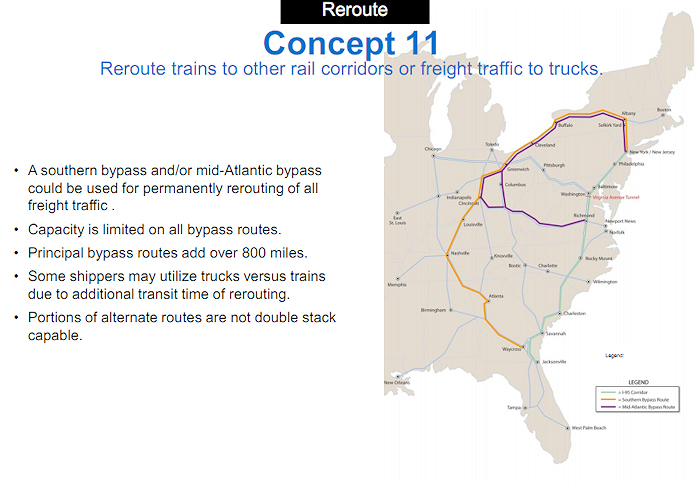 The "reroute" options all propose abandoning the tunnel, either building a nine-mile-long freight tunnel from National Airport to the Deanwood Metro station about 80 feet underground (Concept 8) or building other alignments proposed in recent years by the National Capital Planning Commission (Concepts 9 and 10), or running on CSX's existing tracks out to Ohio and then northward.
The "reroute" options all propose abandoning the tunnel, either building a nine-mile-long freight tunnel from National Airport to the Deanwood Metro station about 80 feet underground (Concept 8) or building other alignments proposed in recent years by the National Capital Planning Commission (Concepts 9 and 10), or running on CSX's existing tracks out to Ohio and then northward.But of course, these are concepts, and one of the reasons for going through a NEPA process is to study the different ideas to then come up with alternatives, accompanied by scads of data on noise, vibration, pollution, traffic, and timeline impacts. And to determine how much the various alternatives would cost--because it's likely that CSX is not going to be too gung-ho on the options anticipated to run into the billions of dollars.
It's expected that the public meeting where the alternatives will be unveiled will be in February of 2012, at which point so many of the questions that residents have been asking for so long about how the tunnel construction will affect the day-to-day lives of people who live near and use Virginia Avenue will get some concrete answers.
Faisal Hameed of DDOT, who ran much of the meeting, emphasized a number of times during the Q&A that this is a unique project: a private company is doing work they are paying for themselves on a right of way that they own some (but not all) of, but the impacts on vehicle/pedestrian/bicycle transportation are expected to be extensive enough that DDOT requested this environmental assessment before getting to the point of signing off on any permits that CSX will need to do the work. (There is also apparently still some negotiating going on between CSX and DDOT about exactly whose right of way is where, but it was said that no portion of the project will enter private land, though some small incursions will happen on the Marine bachelor enlisted quarters' site west of 7th Street.)
The Q&A was a pretty peaceful one as these things go (which makes a cranky blogger so very happy!). Most of the wrangling between audience members and CSX was over the route that hazardous materials take when they are forced to go around the District because of various city laws and federal regulations; the audience members were trying to get CSX to admit that there's an existing route bypassing the city that's shorter than anything shown in the concepts, while CSX wasn't going to get anywhere near telling people where hazardous materials travel.
In response to one audience question (coming as a result of the new FAQ posted on the project web site), CSX did say that they are going to "strongly pursue" getting a waiver to stop the currently required blowing of horns anytime a train enters the tunnel, and that they think it should be a "strong possibility" that it can happen, though of course they weren't wanting to commit.
There were also questions that will be better asked when the alternatives are unveiled, about construction staging, safety during construction, noise and vibration impacts, traffic flow, emergency planning, alley access, and what CSX will do to restore or even improve the Virginia Avenue streetscape when construction is finished. (As for any historic preservation impacts, a Section 106 review of the project is being done concurrently with this NEPA assessment.)
Comments are being accepted on these 12 concepts for the next 30 days, either by using the web site or e-mailing contact@virginiaavenuetunnel.com. (About 530 comments were received after the September scoping meeting.) It's hoped the environmental assessment will be completed with a final NEPA decision by the summer of 2012; though, if there is a finding that there will be a "significant environmental impact" from whichever construction alternative is chosen, then a full Environmental Impact Study (EIS) would then have to be done.
|
Comments (4)
More posts:
CSX/Virginia Ave. Tunnel, meetings
|
Today the council's Subcommittee on Redistricting is holding a hearing (watch live!) on the proposals for new ANC and single-member district boundaries. Late on Monday night, proposed maps for all eight wards were posted, with the Ward 6 maps being exactly the ones that the Ward 6 Task Force submitted back in September. However, a Twitter discussion with Tommy Wells's chief of staff has indicated that the task force maps are not what Tommy forwarded to the subcommittee, and Charles Allen was nice enough to pass along the ANC 6D portion of Tommy's map, seen below on the left, alongside the task force's recommended map (both can be clicked to enlarge):
(The colors don't match up, so beware.) The two biggest differences for Near Southeast are that 1) 6D02 stretches all the way down to Nationals Park as part of its cross-South Capitol boundary, and 2) a pretty obvious notch has been drawn that happens to allow current 6D07 commissioner David Garber to remain within the SMD covering the vast majority of Near Southeast. (The populations of the block where Garber lives and the Capitol Hill Tower block are nearly identical, so a New Jersey Avenue boundary would have been easy enough to use, except that then Garber would be in an SMD with another sitting commissioner--and also wouldn't get to rule over more than about 15 blocks of Near Southeast.)
We'll see what transpires at the hearing. Watch for updates here and on Twitter. And now the Ward 6 Task Force has posted all of Tommy's maps for 6D. (You can also read my many previous posts on the SMD redistricting process over the past few months.)
|
Comments (1)
|
Jonathan O'Connell has a piece in Monday's WaPo Capital Business about Artomatic's search for a 2012 home, and how the organization wants to replicate the success of the 2009 version at the then-vacant 55 M St., SE: "This year's search is down to about four buildings, two near Nationals Park: 1015 Half St. SE, an empty 414,000-square-foot building being purchased by Prudential Real Estate Investors; and the former offices of the National Geospatial Intelligence Agency, at 101 M St. SE. Artomatic also is considering the People's Building in Northeast, and another location in Crystal City."
1015 Half Street (left), on the site of the old Nation nightclub, is currently home to more than 400,000 square feet of Class A office space emptiness right now. The NGA recently departed 1st and M (right), and while I would love for Artomatic to come to this spot merely for the chance to finally get inside the formerly armed encampment before its inevitable demolition as The Yards moves forward, I wonder how excited the organizers would be to have a building with almost no windows, except on the top floor. (I know that 55 M's large windows and great views of Nationals Park, Near Southeast, Southwest, and north to the Capitol were a big hit with 2009 Artomatic attendees.)
It was in December 2008 that word first began to trickle out on the 2009 Artomatic location, so perhaps the decision one way or the other won't be too long in coming.
|
Comments (0)
|
There was no way I was going to let those gray, rainy photos from Tuesday's Yards Park/Teague Park connector bridge opening stand. So, give these a try instead:
|
Comments (1)
|
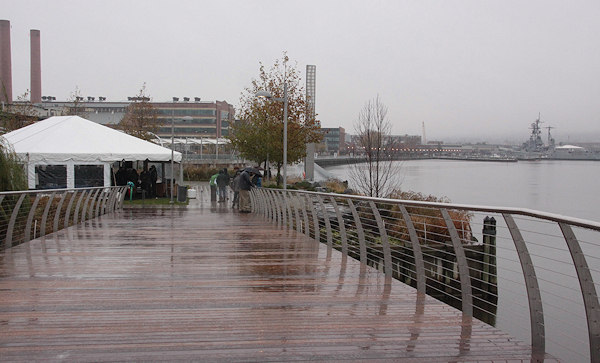 The weather was atrocious, and things got started late (as they so often do when overscheduled politicians are involved), but officials from the city, Forest City Washington, DC Water, and elsewhere gathered at the Yards Park today to officially dedicate the 627-foot-long bridge connecting the Yards with Diamond Teague Park, which is just across Potomac Avenue from Nationals Park's grand staircase.
The weather was atrocious, and things got started late (as they so often do when overscheduled politicians are involved), but officials from the city, Forest City Washington, DC Water, and elsewhere gathered at the Yards Park today to officially dedicate the 627-foot-long bridge connecting the Yards with Diamond Teague Park, which is just across Potomac Avenue from Nationals Park's grand staircase.I wasn't able to hang around for the actual cutting of the ribbon (check the Yards' Twitter feed for a slew of photos of the festivities), but I did take a gallery of photos from my first time walking on the bridge, showing the view of the Anacostia riverfront in all of its gray, overcast, rain-spattered splendor. Needless to say, I'll be returning once the sun is out for a replacement set.
This bridge is part of the planned Anacostia Riverwalk Trail, which continues to open segment by (not necessarily contiguous) segment.
(One side note: Demolition appears to be underway on the concrete tower at Florida Rock, so the new bridge won't seem to be leading directly to that scenic structure for too much longer.)
|
Comments (3)
|
I've tried over the past few months to clampdown on runaway Tidbits posts, but these are some pretty small tidbits, so I think I'll let them through: * Douglass Bridge: The Feds have "freed up" $68 million from previously appropriate funds to allow DC to start buying up right-of-way land for the new South Capitol Street/Douglass Bridge. NBC4 quotes DDOT chief Terry Bellamy as saying "If I had my way and we had the money, we could possibly see a new bridge in about six to seven years." But, considering they're looking for $800 million for not just the bridge itself but all the associated improvements to South Capitol Street and its interchanges with I-395 and I-295, getting the rest of the money might be a little trickier.
* Douglass Bridge: The Feds have "freed up" $68 million from previously appropriate funds to allow DC to start buying up right-of-way land for the new South Capitol Street/Douglass Bridge. NBC4 quotes DDOT chief Terry Bellamy as saying "If I had my way and we had the money, we could possibly see a new bridge in about six to seven years." But, considering they're looking for $800 million for not just the bridge itself but all the associated improvements to South Capitol Street and its interchanges with I-395 and I-295, getting the rest of the money might be a little trickier.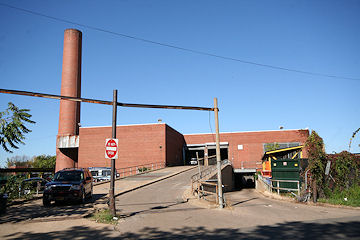 * DPW Move: While the timeline for getting DPW into their new home on Okie St. NE and out of their New Jersey and K site has slipped (shocker!), things are still moving forward, and I'm hearing that they should be moved early in 2012. But this delay is not as yet impacting William C. Smith's plans for a new apartment building just to the north--various permits have recently been approved, and WCS expects to start some deep infrastructure work, along with some clearing and grading along New Jersey Avenue north of I, sometime in December. (But WCS needs DPW out before too long because a smidge of DPW land crosses what will eventually be the new I Street and onto the WCS property.)
* DPW Move: While the timeline for getting DPW into their new home on Okie St. NE and out of their New Jersey and K site has slipped (shocker!), things are still moving forward, and I'm hearing that they should be moved early in 2012. But this delay is not as yet impacting William C. Smith's plans for a new apartment building just to the north--various permits have recently been approved, and WCS expects to start some deep infrastructure work, along with some clearing and grading along New Jersey Avenue north of I, sometime in December. (But WCS needs DPW out before too long because a smidge of DPW land crosses what will eventually be the new I Street and onto the WCS property.)
 * Douglass Bridge: The Feds have "freed up" $68 million from previously appropriate funds to allow DC to start buying up right-of-way land for the new South Capitol Street/Douglass Bridge. NBC4 quotes DDOT chief Terry Bellamy as saying "If I had my way and we had the money, we could possibly see a new bridge in about six to seven years." But, considering they're looking for $800 million for not just the bridge itself but all the associated improvements to South Capitol Street and its interchanges with I-395 and I-295, getting the rest of the money might be a little trickier.
* Douglass Bridge: The Feds have "freed up" $68 million from previously appropriate funds to allow DC to start buying up right-of-way land for the new South Capitol Street/Douglass Bridge. NBC4 quotes DDOT chief Terry Bellamy as saying "If I had my way and we had the money, we could possibly see a new bridge in about six to seven years." But, considering they're looking for $800 million for not just the bridge itself but all the associated improvements to South Capitol Street and its interchanges with I-395 and I-295, getting the rest of the money might be a little trickier.* Half Street: According to the Post, Monument Realty and investment partner Victor MacFarlane "are now thinking about when to begin" developing the rest of their Half Street project. The southern portion of Monument's side of Half Street (the east side--you know, where the big hole in the ground is) was originally designed with both a hotel and a residential building. And there's still no word from Akridge on a start date for their side of Half Street (the Bullpen side).
 * DPW Move: While the timeline for getting DPW into their new home on Okie St. NE and out of their New Jersey and K site has slipped (shocker!), things are still moving forward, and I'm hearing that they should be moved early in 2012. But this delay is not as yet impacting William C. Smith's plans for a new apartment building just to the north--various permits have recently been approved, and WCS expects to start some deep infrastructure work, along with some clearing and grading along New Jersey Avenue north of I, sometime in December. (But WCS needs DPW out before too long because a smidge of DPW land crosses what will eventually be the new I Street and onto the WCS property.)
* DPW Move: While the timeline for getting DPW into their new home on Okie St. NE and out of their New Jersey and K site has slipped (shocker!), things are still moving forward, and I'm hearing that they should be moved early in 2012. But this delay is not as yet impacting William C. Smith's plans for a new apartment building just to the north--various permits have recently been approved, and WCS expects to start some deep infrastructure work, along with some clearing and grading along New Jersey Avenue north of I, sometime in December. (But WCS needs DPW out before too long because a smidge of DPW land crosses what will eventually be the new I Street and onto the WCS property.)* Wha?: Is it just me, or does this article seem like it was written in 2009? It's a bit odd to trot out version 83 of the "there's no food in Near Southeast" story when there are leases signed for at least 10 new eateries to open in the next 12 months: Lot 38 Espresso at the old Little Red Building site (Any Minute Now!), Potbelly and Kruba Thai in the Foundry Lofts by spring, the Park Tavern at Canal Park by summer, and six choices at the Boilermaker Shops by the end of 2012. Not to mention probably another couple places in the Lumber Shed, perhaps a big one at 100 M, and a Harris Teeter in 2013. But I still predict that, when the slew of What's Happening Around Nationals Park stories come pouring out in advance of Opening Day 2012, the focus will still be on the lack of movement along Half Street (see Tidbit #1).
* New Bridge: Don't forget the dedication ceremony for the Yards/Teague bridge on Tuesday at 1:30 pm on the Yards Park side of the bridge. In addition to the mayor and DC Water chief George Hawkins, the organizers are also expecting Eleanor Holmes Norton, Naval District Washington Commandant Rear Admiral Patrick Lorge, USDOT deputy secretary John Porcari--and the Racing Presidents!
 This was rumored a number of weeks ago, but today it is official that Capitol Hill restaurateur Xavier Cervera will be opening a restaurant in the pavilion space at Canal Park. I hope to have more details later today, so check back for updates, but for now I'll repeat what the last rumors were, that the menu would feature "Neopolitan pizzas and a raw bar." (We'll see if that holds up.)
This was rumored a number of weeks ago, but today it is official that Capitol Hill restaurateur Xavier Cervera will be opening a restaurant in the pavilion space at Canal Park. I hope to have more details later today, so check back for updates, but for now I'll repeat what the last rumors were, that the menu would feature "Neopolitan pizzas and a raw bar." (We'll see if that holds up.)Cervera also has another Near Southeast eatery in the works, with Willie's Brew and Que planned for the Boilermaker Shops at the Yards. He is also the man behind Lola's, the Chesapeake Room, Senart's, and the under-renovation Hawk 'N' Dove.
(This is a can't-wait-an-instant-to-get-the-news-out post, so like I said, I'll have more later today, including hopefully timelines and whatnot.)
UPDATE: The restaurant will be named the Park Tavern, and Chris Vanarsdale of the Canal Park Development Association says they are "still working out the details of the menu." Cervera will be designing the 3,500-square-foot LEED gold or platinum space over the next couple of months, and it will open at the same time the park is completed, which is now expected to be June 2012. There will also be outdoor seating.
And, probably less exciting news but news nonetheless is that the CPDA also now has an agreement with Rink Management Services to operate the ice skating rink in the park's southernmost block, near M Street. (They operate the Reston Town Center rink along with lots of other seasonal and year-round rinks across the country.) Needless to say, that part of the park probably won't be functioning when the park opens next summer, but look for it in the winter of 2012/2013.
Construction on the park continues, with lots of infrastructure work still being done (though the pavilion where the Park Tavern will be continues to rise up). My Canal Park page has more information, renderings, and some not-altogether-outdated photos.
|
Comments (10)
|
 On Monday night, ANC 6D gave its support to a series of minor modifications (very minor--did I mention they were minor?) to the previously approved design of the new residential/retail/grocery development planned for the southeast corner of 4th and M, SE.
On Monday night, ANC 6D gave its support to a series of minor modifications (very minor--did I mention they were minor?) to the previously approved design of the new residential/retail/grocery development planned for the southeast corner of 4th and M, SE. Because the lease with Harris Teeter has been executed since the project's zoning approvals were received, Forest City needs an okay for the company's signage, which you can see in the updated rendering. An outdoor seating area on 4th Street has also been added, and the design of the residential building's vestibule on 4th has been altered in order to use "structural glass." There were also slight changes to the roof structure, the sunscreens on the residential windows, the design of the trellises shielding the parking deck, and other items that should probably just be read about in the Office of Planning report that supports the proposed changes. (If you want the real nitty gritty of the updated design for this block, you can look through the full submittal to the Office of Zoning.)
Alex Nyhan of Forest City told 6D that he expects excavation on the site to start in about a month, with superstructure work beginning in the spring. This would bring the opening date to late 2013 or early 2014. (The entire block, consisting of the 55,000-square-foot Teeter, 218 apartments, and the as-yet-unnamed health club and other retail spaces at the south end of the site, is being built at the same time.)
There weren't many questions from commissioners. David Garber, who said that this was the first project reviewed by his new 11-member Near Southeast Citizen Development Advisory Committee, did question the project's representatives about the plans for bike parking. (Shocker!) Nyhan said there would be racks on 4th Street, and that they would be working with Harris Teeter to allow bikers to bring their bikes into the store and take them down to the parking level via elevator, but that no biking would be allowed into the parking garage. There was also discussion of whether the entrance to the garage could be expanded to allow for bike racks at street level, but Nyhan said there is not enough room in the design to widen the entrance.
The ANC then voted unanimously to support the project. It will be taken up by the Zoning Commission at its Nov. 28 meeting, having been removed from the Monday night agenda so that the ANC could be allowed to weigh in before the ZC voted.
You can see my Yards Parcel D project page for more details and photos.
|
Comments (6)
More posts:
ANC News, Development News, Florida Rock, Harris Teeter, meetings, Retail, The Yards, Twelve12/Teeter/Yards, zoning
|
 I received no notification of this, just decided to wander by CSX/DDOT's Virginia Avenue Tunnel web site and look for updates, and so am just happening to see that there's a Public Alternative Meeting scheduled for Nov. 30 from 6:30 pm to 8:30 pm at Nationals Park. Their description: "As a follow-up to the public scoping meeting held on September 14, 2011, a second public meeting will be held to discuss alternatives for this project. This public meeting will include a formal presentation, question and answer session, and open house displays. The formal presentation will start at 7:00 p.m. Both verbal and written comments will be taken at the meeting."
I received no notification of this, just decided to wander by CSX/DDOT's Virginia Avenue Tunnel web site and look for updates, and so am just happening to see that there's a Public Alternative Meeting scheduled for Nov. 30 from 6:30 pm to 8:30 pm at Nationals Park. Their description: "As a follow-up to the public scoping meeting held on September 14, 2011, a second public meeting will be held to discuss alternatives for this project. This public meeting will include a formal presentation, question and answer session, and open house displays. The formal presentation will start at 7:00 p.m. Both verbal and written comments will be taken at the meeting."Given the displeasure voiced by many residents about the lack of information from CSX at the September meeting, it will be interesting to see how girded for battle both sides are at this second session. The official comments letter from the Capitol Quarter Homeowners Association, all 23 pages of it, is probably a pretty complete indicator of the issues that residents along Virginia Avenue will be pressing CSX over.
You can also read my many previous entries on the subject for more details (not in the mood to write the long re-summary today), and ANC 6B commissioner Norm Metzger is writing a lot about the subject as well.
UPDATE: An e-mail has now gone out officially announcing the meeting. It says that free parking will be available in Nats Lot C (at the corner of 1st and N), and that there will be free shuttles from Capper Seniors #1 (900 5th St. SE) and Van Ness Elementary (1150 5th St. SE).
Also, here is the official flyer, which nearby residents will be receiving in the mail.
|
Comments (2)
More posts:
CSX/Virginia Ave. Tunnel, meetings
|
 While you're spending your weekend trying not to head toward the Navy Yard Metro station by mistake, you can take a moment or two to add Monday's ANC 6D meeting to your calendar. The agenda doesn't seem to be getting updated online these days, but an e-mailed version shows that the only Near Southeast item to be discussed will be the Harris Teeter/residential building in the Yards, on 4th Street south of M. There are few minor modifications to the design approved by the Zoning Commission nearly a year ago that need new approvals (including an "upgraded" design for the entrance to the residential building), and so those are what will be presented to the ANC.
While you're spending your weekend trying not to head toward the Navy Yard Metro station by mistake, you can take a moment or two to add Monday's ANC 6D meeting to your calendar. The agenda doesn't seem to be getting updated online these days, but an e-mailed version shows that the only Near Southeast item to be discussed will be the Harris Teeter/residential building in the Yards, on 4th Street south of M. There are few minor modifications to the design approved by the Zoning Commission nearly a year ago that need new approvals (including an "upgraded" design for the entrance to the residential building), and so those are what will be presented to the ANC.There was a bit of a flurry on Thursday morning when a tweet from a local business symposium indicated the work would begin on this project "next week." However, I checked with Forest City, and there's still a building permit that hasn't yet been approved, so while they hope to start construction reallyreallyreally soon, "next week" might be a bit optimistic.
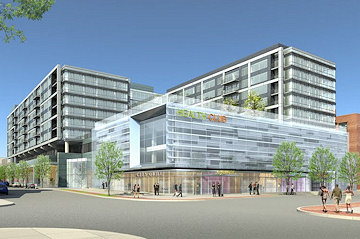 If you're just joining us, this project originally was planned to be an office building on top of the Harris Teeter, but will now instead be two long and narrow apartment buildings with a total of 200ish-units, with their entrance at 1212 4th St. SE. The Teeter will be 55,000 square feet and will have its main entrance near M Street. While the executive architect for the entire project is Shalom Baranes, the interior designer for the apartments is Core Architects out of Toronto, and you can see a few renderings on their site as being for "The Yards" (looks like a lobby or community room space, maybe?) , along with their many other projects.
If you're just joining us, this project originally was planned to be an office building on top of the Harris Teeter, but will now instead be two long and narrow apartment buildings with a total of 200ish-units, with their entrance at 1212 4th St. SE. The Teeter will be 55,000 square feet and will have its main entrance near M Street. While the executive architect for the entire project is Shalom Baranes, the interior designer for the apartments is Core Architects out of Toronto, and you can see a few renderings on their site as being for "The Yards" (looks like a lobby or community room space, maybe?) , along with their many other projects.On the south end of the block, at 4th and Tingey, there will be a four-story building with another 55,000 square feet of retail space, with what's expected to be a spa/fitness center/gym tenant on the top two floors and retail on the bottom two (seen at above left). There will also be a new narrow service road running south from M between this new development and Building 202 for loading zone access. Access to residential parking will be from Tingey, and the grocery and retail parking entrance will be on 4th, next to the residential lobby entrance. The retail spaces are being designed by Kenneth Park Architects.
You can check out my Yards 401 M/Parcel D page for more information, photos, and renderings. (Plus, in case you're wondering, this building site is just across 4th Street from the Boilermaker Shops retail space, about a block to the northeast of the Foundry Lofts, and a block from the Yards Park.)
The ANC 6D meeting is on Monday Nov. 14 at 7 pm at 1100 4th St., SW (the Safeway building), in the 2nd Floor DCRA meeting room.
|
Comments (11)
More posts:
ANC News, Development News, Harris Teeter, meetings, Retail, The Yards, Twelve12/Teeter/Yards, zoning
|
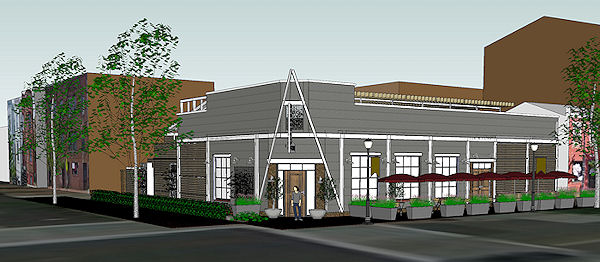 It was one year ago today that we heard the first rumblings of plans for a beer garden to be built on the northwest corner of 8th and L, SE. It would have 99 indoor seats and space for an additional 200 customers in a "summer garden," and would offer live music.
It was one year ago today that we heard the first rumblings of plans for a beer garden to be built on the northwest corner of 8th and L, SE. It would have 99 indoor seats and space for an additional 200 customers in a "summer garden," and would offer live music.The project went through all manner of liquor license wrangling, followed by a lot of work on the design in order to satisfy the Historic Preservation Review Board (which it finally did, in March). At many of these sessions, the owner spoke of wanting to get the project underway as quickly as possible, but since the HPRB approvals in spring, it hasn't seemed like anything has been happening.
However, late last week, when I was playing around with DDOT's new Public Space Permit locator app and figuring out how to import its Occupancy Permit data into my own list of Near Southeast Public Space Permits, I saw that a construction staging area permit had been issued for 720 L St. SE on Sept. 22. Some digging into the city's building permits application also found building permits applied for on Aug. 18, but still not yet approved.
I contacted the owner, Mark Brody, and he tells me that they indeed are working on permits, but "it's taking longer than expected." (I know, this is a shocker.)
So, no timetable for the project's opening at this point, but it appears it hasn't fallen completely off the map.
For more, you can see my 8th Street Beer Garden project page, or read the posts from the approvals process.
(And, speaking of the permits feed on the JDLand home page, I've tinkered with both the public space and building permits so that they're now sorted and grouped by address.)
|
Comments (8)
|
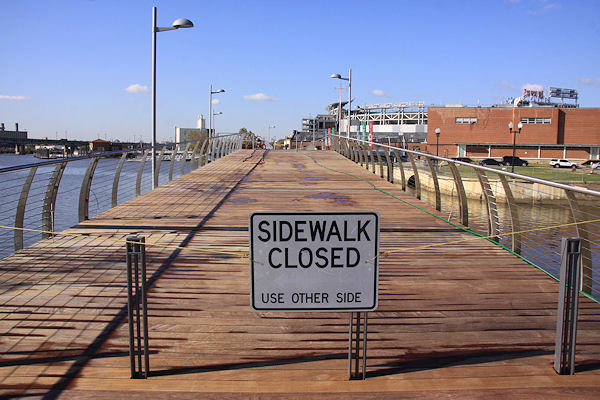 The word is going out that the official dedication of the new pedestrian bridge connecting the Yards Park and Diamond Teague Park will be held on Tuesday, Nov. 22, at 1:30 pm. The mayor is expected to be there, along with George Hawkins of DC Water (since the bridge runs right past the main pumping station) and I'm sure a slew of other dignitaries.
The word is going out that the official dedication of the new pedestrian bridge connecting the Yards Park and Diamond Teague Park will be held on Tuesday, Nov. 22, at 1:30 pm. The mayor is expected to be there, along with George Hawkins of DC Water (since the bridge runs right past the main pumping station) and I'm sure a slew of other dignitaries.This is the bridge that will allow for an easier and more enjoyable stroll between the Yards Park and Nationals Park, depositing stadium-goers right across the street from the Grand Staircase/1st Base Gate at 1st Street and Potomac Avenue. And it will also allow water taxi customers disembarking at Teague Piers to get to the Yards Park without having to hike up to Tingey Street and then over a few blocks. (Eventually the Yards Park will have its own marina and water taxi piers, but not for another few years.)
It is part of the Anacostia Riverwalk Trail, and eventually will also connect to a larger public plaza adjacent to Teague Park, as part of the easternmost development of the FloridaRock/RiverFront project.
Hope they have good weather for the ribbon cutting!
(This is probably also a good time to make quick mention of AtlanticCities' recent naming of the Yards Park as one of America's Best New Parks.)
|
Comments (1)
|
If you thought the closure of the Navy Yard Metro station over Halloween weekend was a blast, you get to relive it again over the upcoming Veterans' Day long weekend, as once again WMATA has major Green Line track work planned.
And, if you're someone who uses the Navy Yard station to get to work, hopefully your employer follows the full federal holiday calendar, because this time the closures begin at 10 pm Thursday, Nov. 10, since Friday is the Veterans' Day holiday. Through the system closing on Sunday, Nov. 13, Navy Yard, Waterfront, Anacostia and Congress Heights stations will all be closed. Free shuttle buses will run to the closed stations from L'Enfant Plaza and Southern Avenue, but Metro advises customers to "allow 30 minutes of additional travel time."
|
Comments (0)
More posts:
Metro/WMATA
|
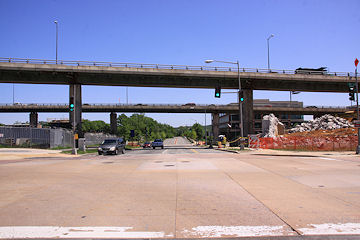 The 11th Street Bridges folks have put out the word that this week they will be installing girders across M Street SE between 11th and 12th Streets as part of the new freeway flyover. They'll be doing the work from 9 pm to 5 am Nov. 7 through Nov. 10, and it will require closure of the inbound 11th Street Bridge exit ramp to M Street as well as eastbound M Street between 11th and 12th. (Westbound M will have "limited access.")
The 11th Street Bridges folks have put out the word that this week they will be installing girders across M Street SE between 11th and 12th Streets as part of the new freeway flyover. They'll be doing the work from 9 pm to 5 am Nov. 7 through Nov. 10, and it will require closure of the inbound 11th Street Bridge exit ramp to M Street as well as eastbound M Street between 11th and 12th. (Westbound M will have "limited access.")This flyover is what will be connecting the new freeway bridge to the westbound Southeast Freeway. You can see recent photos showing the progress of the entire 11th Street Bridges project in this October 7 photo gallery. It's expected that the new freeway bridge will open by the end of this year. (Which isn't far off!)
|
Comments (0)
More posts:
11th Street Bridges
|
If you see scads of people walking around the neighborhood tomorrow (Saturday, Nov. 5), it's the American Heart Association Heart Walk. It starts at Nationals Park, goes around the concourse, exits out to Potomac Avenue, goes up First to Tingey, then over to the Yards Park (and on the boardwalk), then up to M Street, back down Half, and over to South Capitol before heading back into the ballpark for the finish line. (Here's the map.) The event starts at 8:30 am, but it doesn't leave the ballpark until 10 am.
|
Comments (0)
More posts:
Stadium Events
|
 The long road to giving the Navy Yard Metro station a new name seems to have at last come to its resolution, as WMATA's board voted to approve "Navy Yard-Ballpark."
The long road to giving the Navy Yard Metro station a new name seems to have at last come to its resolution, as WMATA's board voted to approve "Navy Yard-Ballpark."With the city having a "private commitment" (rumored to be the Nationals) to pay the costs of the change, and with rider surveys having shown a favorable response to the new name, the board opted to approve DC's request instead of its staff's recommendation of putting Ballpark in as a secondary name.
This all started more than a year ago, with the Capitol Riverfront BID initially wanting some version of "Capitol Riverfront/Ballpark/Navy Yard." Then the Nationals started pushing for adding the "Curly W", for some variant of Navy Yard/Capitol Riverfront/ . Then WMATA came out with its new naming guidelines, including a requirement that names be no more than 19 characters, which prompted the BID to ask for "Navy Yard" to be dropped altogether. ANC 6D then opted to support Navy Yard-
. Then WMATA came out with its new naming guidelines, including a requirement that names be no more than 19 characters, which prompted the BID to ask for "Navy Yard" to be dropped altogether. ANC 6D then opted to support Navy Yard- , or Navy Yard-Ballpark if the Curly W wouldn't be allowed. DDOT then officially asked that Navy Yard-Ballpark be forwarded to WMATA for approval. Then we had the staff recommendation for a split primary/secondary naming. And then today's action. Wasn't that a cinch?
, or Navy Yard-Ballpark if the Curly W wouldn't be allowed. DDOT then officially asked that Navy Yard-Ballpark be forwarded to WMATA for approval. Then we had the staff recommendation for a split primary/secondary naming. And then today's action. Wasn't that a cinch?
This change, along with dropping "SEU" from the Waterfront station name and other changes around the system, are to take place when Metro's new map debuts in June of 2012.
|
Comments (2)
More posts:
Metro/WMATA
|
2718 Posts:
Go to Page: 1 | ... 17 | 18 | 19 | 20 | 21 | 22 | 23 | 24 | 25 ... 272
Search JDLand Blog Posts by Date or Category
Go to Page: 1 | ... 17 | 18 | 19 | 20 | 21 | 22 | 23 | 24 | 25 ... 272
Search JDLand Blog Posts by Date or Category



